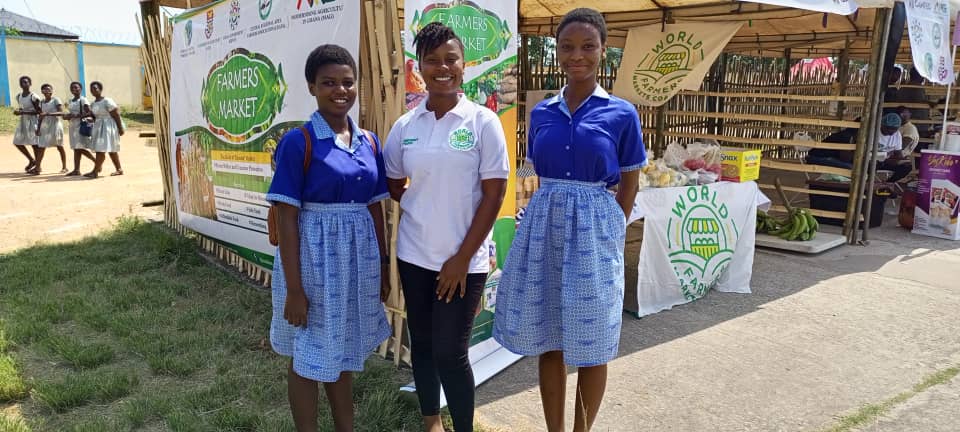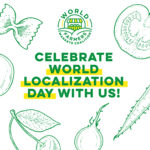Guest Article by Dr. Selorm Akaba & Ayisha Ameen
Agricultural production in Ghana is mostly done in rural areas and is women-dominated. Agriculture employs 85% of the rural workforce. Small-scale farmers produce 95% of the country’s food crops (Somanje, 2020). Many challenges have been identified in the sector, and stakeholders have devised innovative solutions to tackle these issues. One major challenge is the disparities in rural and urban places, including economic productivity, higher rates of poverty, and poorer quality infrastructure and services in rural areas. This rural-urban gap is mostly evident in the agricultural space, which is a major challenge for the farmers. Increasing urbanization, coupled with the challenges of population increase, and food insecurity call for innovative strategies to promoting community development. To achieve this, there is the need to increase agriculture productivity and the need for new market outlet (Showers, 2002). Participation in local community economies boosts urban and rural performances. Vertical coordination within the agri-food system must benefit all actors including farmers and consumers. Farmers’ markets have the potential of being the needed market outlet to boost agriculture sales as it is an improvement on the traditional market.

Attention has been focused primarily on production challenges while ignoring other aspects of the supply chain. This has mainly affected the farmers and the vulnerable, especially women, as this has made them poor. I was very enthusiastic about the arrival of the farmers market since it allows farmers to sell their fresh produce while cutting out the activities of long chains of intermediaries that lower farmers’ profits. Farmers and consumers can interact directly at the farmers market. The farmers market is an open platform that provides a ready market for farmers and directly links farmers and consumers. Strategies adopted by the farmers’ market program, such as awareness creation, scoping studies, radio presentations, farmers’ fairs, and stakeholders’ engagement that involved women, who are the major drivers of the farmers’ market. Furthermore, this space connects farmers and end-users directly, removing the long chain of middlemen activities and ensuring that both parties receive the rewards they deserve, making farming appealing. The farmers’ market space also involves the youth by devising innovative solutions that can make youth employable and make the agricultural sector attractive to the youth.

Most importantly, as an agricultural economist, the economic impact of the farmers’ market platform is something that cannot be left untouched. Farmers have benefited from the farmers’ market by receiving fair prices and eliminating middlemen activities, resulting in higher farmer profit margins. The farmers’ market does not only ensure a ready market but also provides an opportunity for consumers to trace the source of what they consume, connect with end-users, take their feedback into consideration, learn to improve upon their produce, and also improve upon their livelihoods. Women are mostly affected as they have to go through the challenge of marketing their farm produce after production, and through the farmers’ market platform, such stress is solved and time is saved. This has had a significant impact on rural economy in general, as farmer livelihoods have improved. On the other hand, through the farmer’s market, consumers are ensured of a reliable supply of fresh farm produce, trust, fair prices, and an opportunity to communicate with farmers directly. Consumers are also saved from the stress and time of going through the traditional means to get their farm produce. The farmers’ market has, most importantly, helped bridge the gap between rural and urban in the agricultural sector in Ghana. This space goes beyond marketing; it is an opportunity to network, strengthen communities, and learn about each other. This space provides consumers with better access to food, lower costs for accessing food, healthier public spaces, and more dependable revenues for farmers, making it attractive to others.

The social media platforms leveraged by the farmers’ market platform in Ghana are very innovative ways to reach a larger audience and more consumers. More innovative solutions should be devised by creating a large platform where consumers can be linked directly to farmers without necessarily having any contacts. An example is a mobile application platform that accumulates the demands of consumers and offers them to farmers. This will further strengthen the farmers’ market space and ensure both farmers’ and consumers’ needs are met. Also, taking into consideration the current challenges posed by climate variability, leveraging online platforms will help reduce the post harvest loss farmers are facing and also ensure fresh agricultural produce is supplied to end-users at affordable prices. The farmers’ market platform has been innovative and engaging, helping to address challenges farmers are facing not only at the production stage but also at the marketing stage, which is very plausible.
For more information about the farmers market networks in Ghana, follow them on Facebook!
Sources:
Showers, K.B. (2002). Water Scarcity and Urban Africa: An Overview of Urban-Rural Water Linkages. World Development, 30, 621-648. https://doi.org/10.1016/S0305-750X(01)00132-2
Somanje, A. N., Mohan, G., Lopes, J., Mensah, A., Gordon, C., Zhou, X., Moinuddin, M., Saito, O., & Takeuchi, K. (2020). Challenges and Potential Solutions for Sustainable Urban-Rural Linkages in a Ghanaian Context. Sustainability, 12(2), 1–19.






